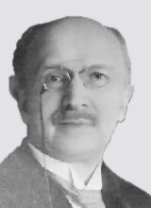|
性行为的发展
|
|
性行为的发展阶段 |
|
婴幼儿期的性行为发展 |
|
 |
|
艾伯特·莫尔
(1862-1939年)
拼命地反对精神分析理论及其创建者西格蒙德·弗洛伊德。然而,他也同意儿童期有性行为的概念,并于1909年出版了一部有影响力的著作,书名叫《儿童的性生活》。
|
|
Albert Moll
(1862-1939)
vehemently opposed psychoanalysis and its founder Sigmund Freud. Nevertheless, he also subscribed to the concept of childhood sexuality and, in 1909, published an influential book titled “The Sexual Life of the Child”. |
|
|
超声波成像技术显示男胎有阴茎勃起,而且人们也发现在新生女婴有阴道湿润。按照马斯特斯和约翰逊所使用的含义,这些现象可以被称为“性反应”,但是,当把这种概念用于婴儿时,可能意义不大。毕竟,我们成人现在与“性”兴奋相关的典型的生理和心理反应,直到年龄稍大之前,并未开始出现。对于婴幼儿,许多愉悦和快乐的体验仍旧微弱。的确,就像许多性学家已经论述的那样,草率地谈论“儿童的性生活”也许并不明智。孩童时期的性也许只不过是一个现代发明,而不是一个现代发现。把旧时发现的生物学方面的事实作出新解,理解成一种文化构建的现象也许更为贴切。从前的年代,人们看待事物是非常不同的。例如,我们了解到在许多无文字记载的社会,甚至在欧洲的中世纪,父母、祖父母和奶妈为了抚慰孩子和使孩子放松,常常给幼儿进行手淫。那么,我们应该把这种习惯当作“儿童性辱虐(sexual
child abuse)”[1]吗?我们的远祖也许就没有过这样的解释。甚至当孩子们自己手淫时,他们的家人把这当作由于不舒适时的“正常”缓解,像挠痒痒或擤鼻涕那样。儿童很可能也有愉悦感、甚至有高潮,但是这未曾被当作一种“性”体验看待。只有随着现代黎明来临之际,当开始意识到要把儿童本身当作人类发展中的特定保护对象之时,这种行为才成为了“性”的行为。这就带来了另一个相关的评判:一个在儿童期有性欲兴趣的成年人常常误以为儿童需要把“性”欲作为对他们的慈爱。然而,当这个成人对一名儿童的性欲意图(erotic
intention)突然显现时,这名儿童也许会感到惊讶、甚至感到震惊。(我们在此例举的)有关这位成人的这种遭遇的假设进而已经完全被误解了。总而言之,因种种理由,儿童的性欲概念是值得怀疑的。如果不分青红皂白地使用这个概念,这可能导致误解,因而,我们不能盲目地接纳这个概念。就婴儿和儿童来说,永远都应该审慎地使用“性的(sexual)
”这个词。
|
|
Development of Sexual Behavior |
|
Stages of Development |
|
Infancy |
|
Ultrasound pictures have shown male fetuses with erections of the penis, and one has found vaginal lubrication in newborn girls. These phenomena can be called “sexual responses” in the sense used by Masters and Johnson, but this usage my not be very meaningful when applied to infants. After all, the typical physical and psychological reactions we now associate with “sexual” excitement do not begin to appear until later. For infants and small children, the many experiences of pleasure and wellbeing are still rather diffuse. Indeed, it may not even be wise to speak summarily of “the sexual life of the child” as many sexologists have done.
Childhood sexuality may be more of a modern invention than a discovery. It is probably better understood as a cultural construct, a new interpretation of old biological facts. Former ages saw things very differently. We know, for example, that in many preliterate societies, and indeed in the European Middle Ages, parents, grandparents and wet nurses regularly masturbated small children in order to pacify and relax them. Should we consider this practice “sexual child abuse”? Our distant forbears would not have understood such an interpretation. Indeed, even when children masturbated themselves, their families saw it as a “natural” relief from discomfort like scratching or blowing one’s nose. The children may very well have had pleasurable sensations and even reached orgasm, but this was not seen as a “sexual” experience. It became “sexual” only with the dawning of the modern age, when childhood itself began to be recognized as a special, protected phase of human development. This brings us to another pertinent observation: An adult with an erotic interest in children typically misconstrues their need for affection as “sexual” desire. The children, however, may be surprised and even shocked when the erotic intentions of the adult suddenly become clear. His assumptions about the encounter then turn out to have been totally mistaken. In sum, the concept of childhood sexuality is problematical for a variety of reasons. Used indiscriminately, it can lead to misconceptions and therefore should not be accepted blindly.
In reference to infants and children, the world “sexual” should always be used with caution.
|